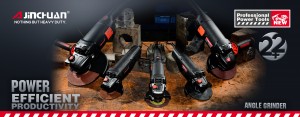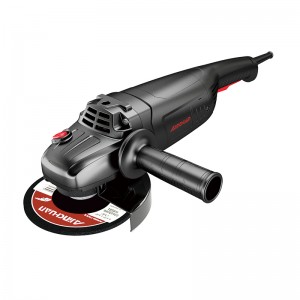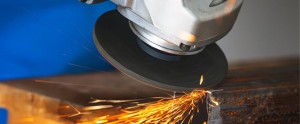Angle grinders and Angle grinders are two common power tools that are widely used in fields such as metal working, wood working, construction and automotive repair. Despite their similar names, there are significant differences in functionality, design, and application scenarios. This article will comprehensively discuss the difference between Angle grinder and Angle grinder from the aspects of definition, structure, function, application scenario, advantages and disadvantages, and purchase suggestions, etc., to help readers better understand and use these two tools.
First, the definition and structure of Angle grinder and Angle grinder
1. Angle Grinder
The Angle grinder is a hand-held power tool that is mainly used for cutting, grinding and polishing. Its core components include a motor, a gear box and a rotating disc (grinding wheel or cutting sheet). Angle grinders are usually equipped with a side handle to enhance operating stability.
Main structure:
Motor: provides power to drive the disc to rotate at high speed.
Gear box: Converts the high speed rotation of the motor to the speed suitable for the disc.
Disc: Select cutting disc, grinding wheel or polishing pad according to task requirements.
Shield: Protects the user from flying debris and sparks.
2. Angle Grinding Machine
Angle grinding machine is a fixed or semi-fixed equipment, mainly used for precision grinding and finishing. It is usually equipped with a workbench and adjustable grinding head, suitable for high-precision surface treatment of the workpiece.
Main structure:
Table: Used to fix the workpiece, usually adjustable Angle and height.
Grinding head: equipped with grinding wheel or disk for grinding and dressing.
Motor: provides power to drive the grinding head to rotate.
Cooling system: Some Angle grinders are equipped with water cooling system to prevent overheating of the workpiece.
Second, function and use
1. Function and use of Angle grinder
The Angle grinder is a versatile tool suitable for the following tasks:
(1) Cutting
Applicable materials: metal, stone, wood, plastic, etc.
Application scenarios: construction sites, car maintenance, home decoration.
(2) Grinding
Applicable materials: metal welds, wood surfaces, concrete walls.
Application scenarios: metal processing, furniture making, wall treatment.
(3) Polishing
Applicable materials: metal, stone, wood.
Application scenarios: automobile beauty, handicraft production, home decoration.
2. Function and use of Angle grinder
Angle grinding machines are mainly used for precision grinding and finishing and are suitable for the following tasks:
(1) Precision grinding
Applicable materials: metal, ceramic, glass.
Application scenarios: mold manufacturing, mechanical parts processing, handicraft production.
(2) Surface dressing
Applicable materials: metal, stone, wood.
Application scenario: high-precision workpiece processing, surface treatment.
(3) Deburring
Applicable material: metal, plastic.
Application scenarios: machining, parts dressing.
3. Comparison of application scenarios
1. Application scenario of Angle grinder
Construction site: Used for cutting steel bars and grinding concrete walls.
Automobile maintenance: used for cutting exhaust pipes and polishing body surfaces.
Home decoration: for cutting tile, grinding wood.
2. Application scenario of Angle grinder
Mold manufacturing: Used for precision grinding mold surface.
Machining: Used for trimming mechanical parts and deburring.
Crafts: For high precision grinding and polishing.
4. Comparison of advantages and disadvantages
1. Advantages and disadvantages of Angle grinder
Advantages:
Strong portability: handheld design, suitable for a variety of scenarios.
Versatility: can complete cutting, grinding, polishing and other tasks.
Low cost: The price is relatively cheap, suitable for individuals and small businesses.
Cons:
Limited accuracy: not suitable for high-precision machining.
Low security: High-speed rotating disks may pose security risks.
2. Advantages and disadvantages of Angle grinder
Advantages:
High precision: suitable for high precision grinding and finishing.
High safety: fixed design, reduce operational risks.
Strong stability: bench and cooling system improve machining quality.
Cons:
Poor portability: large volume, not suitable for mobile use.
High cost: high price, suitable for professional processing enterprises.
Fifth, purchase advice
1. Suggestions for the purchase of Angle grinder
Power selection: Select the right power according to the task requirements (usually 500W-2500W).
Disk size: Select disk size based on material thickness (usually 4-9 inches).
Brand and quality: Select well-known brands to ensure equipment durability and safety.
2. Suggestions for the purchase of Angle grinder
Accuracy requirements: Select the appropriate table and grinding head according to the machining accuracy.
Cooling system: Choose a model with a water cooling system to prevent overheating of the workpiece.
Brand and after-sales: Choose a brand that provides perfect after-sales service to ensure long-term use of the equipment.
Vi. Conclusion
There are significant differences between Angle grinders and Angle grinders in terms of function, design and application scenarios. With its portability and versatility, Angle grinders are suitable for cutting, grinding and polishing tasks in a variety of scenarios. Angle grinding machines, with their high accuracy and stability, are suitable for high-precision grinding and finishing tasks. By understanding the differences between the two tools, users can choose the right device based on actual requirements to improve work efficiency and security. It is hoped that this guide can help readers better understand and use Angle grinders and Angle grinders to provide reliable support for various machining tasks.
Post time: Mar-24-2025



